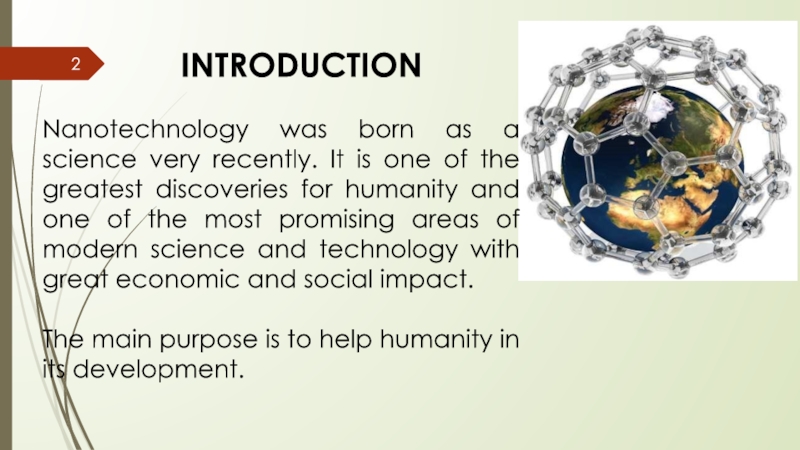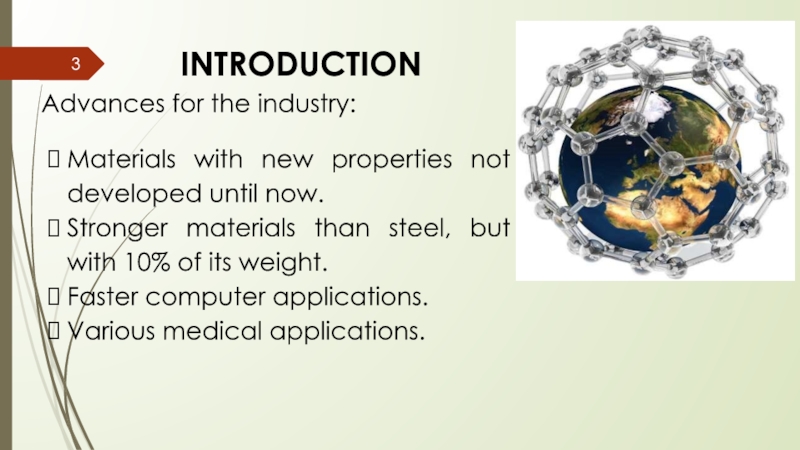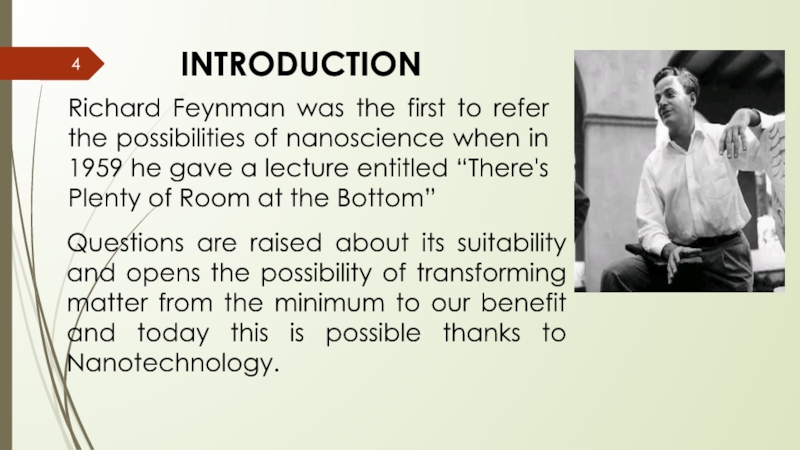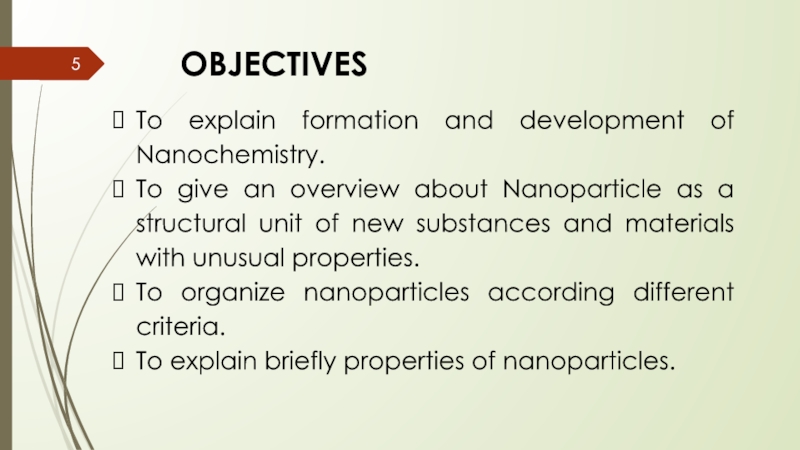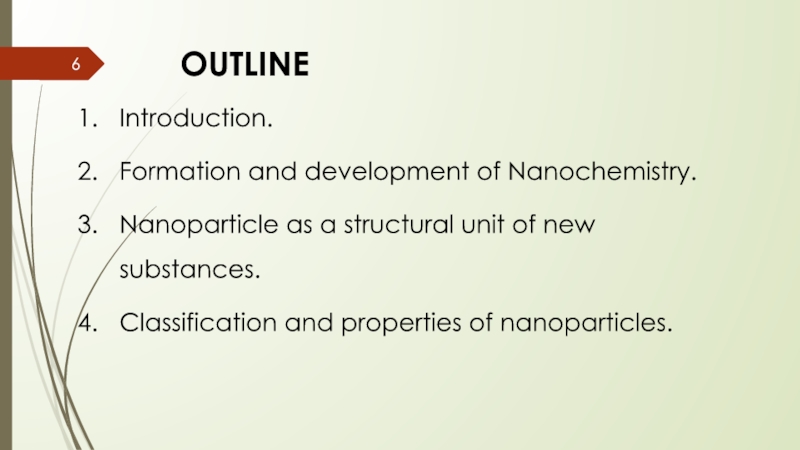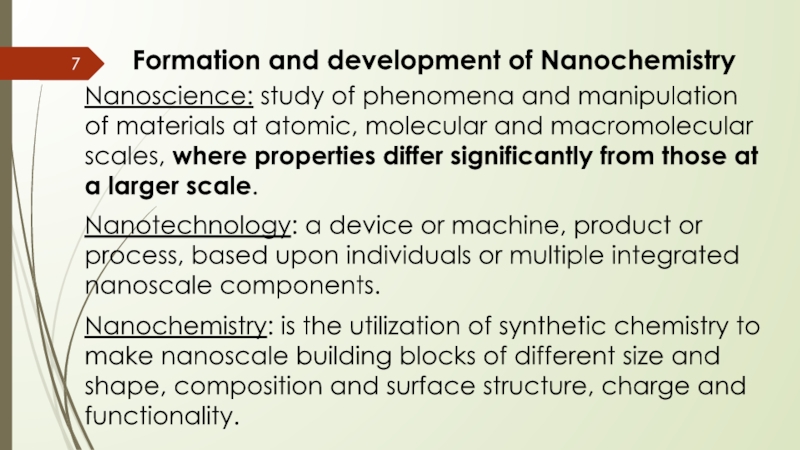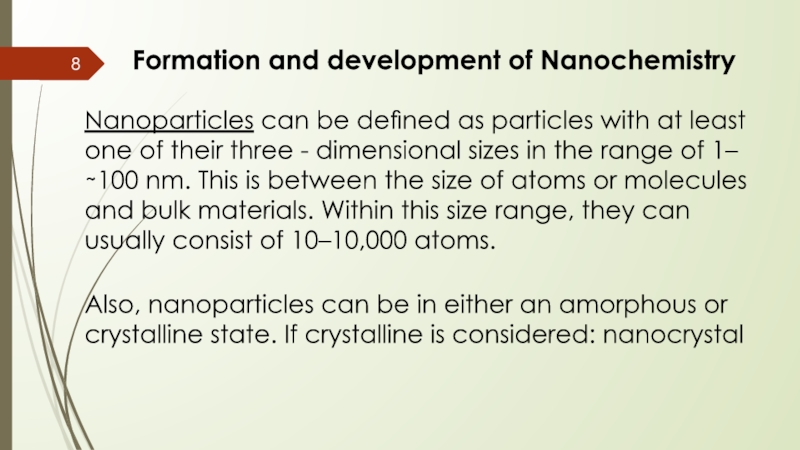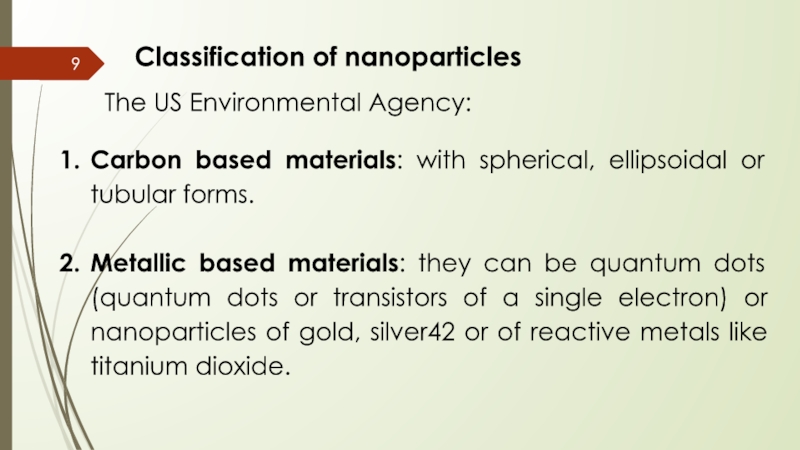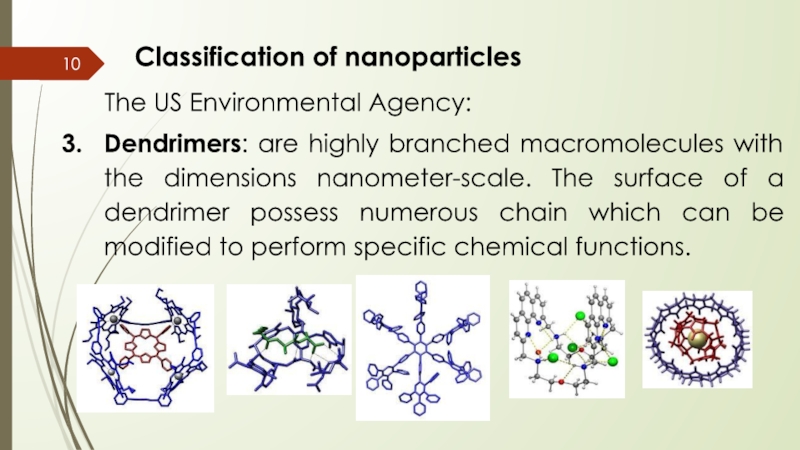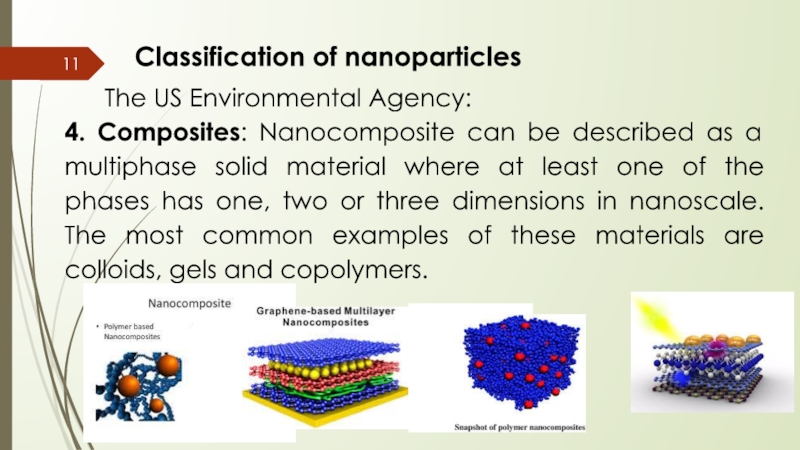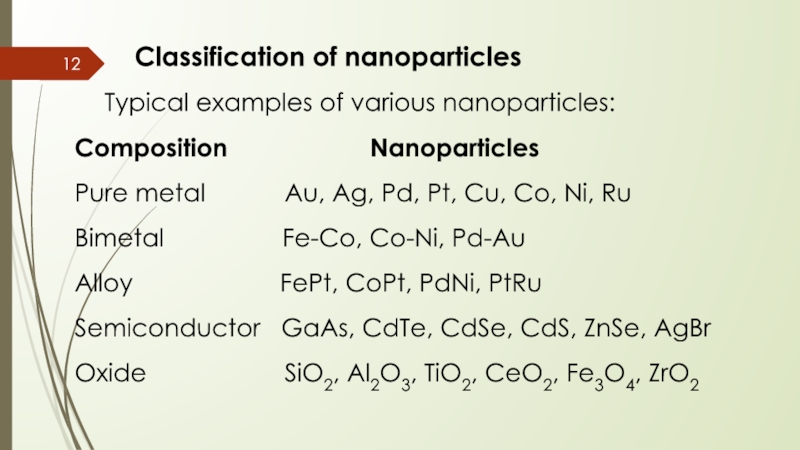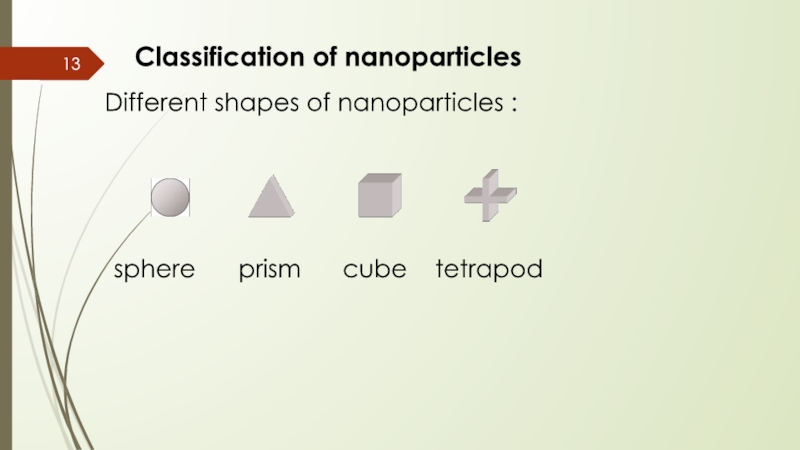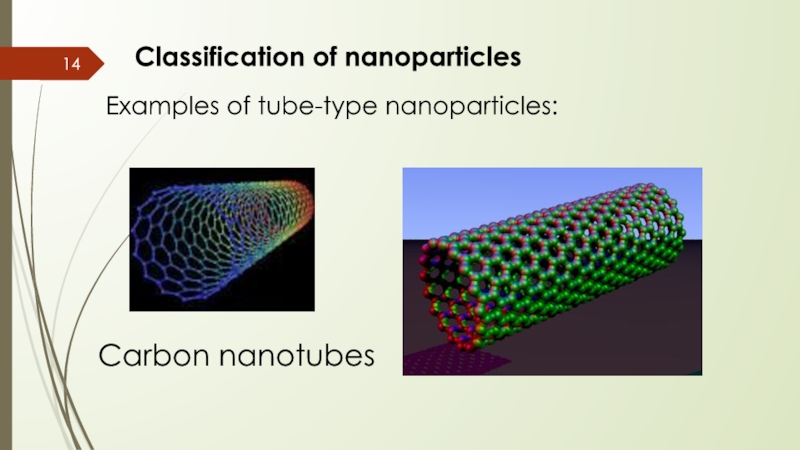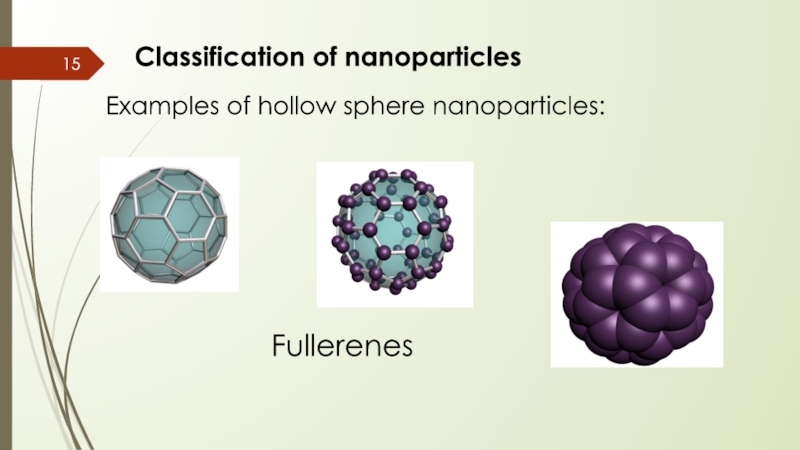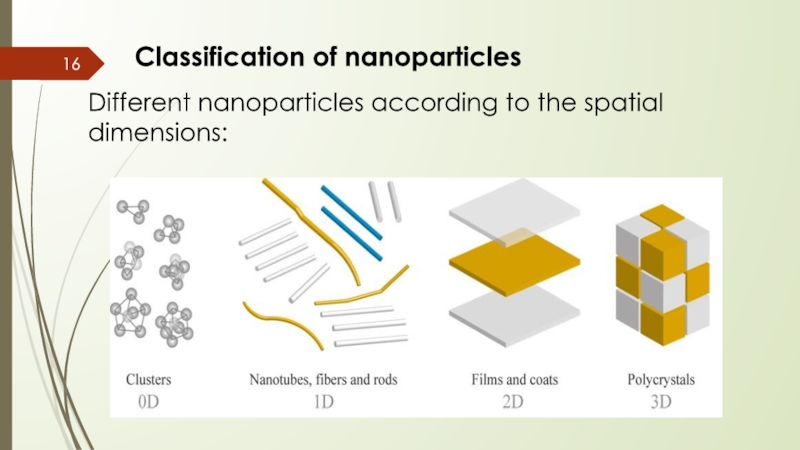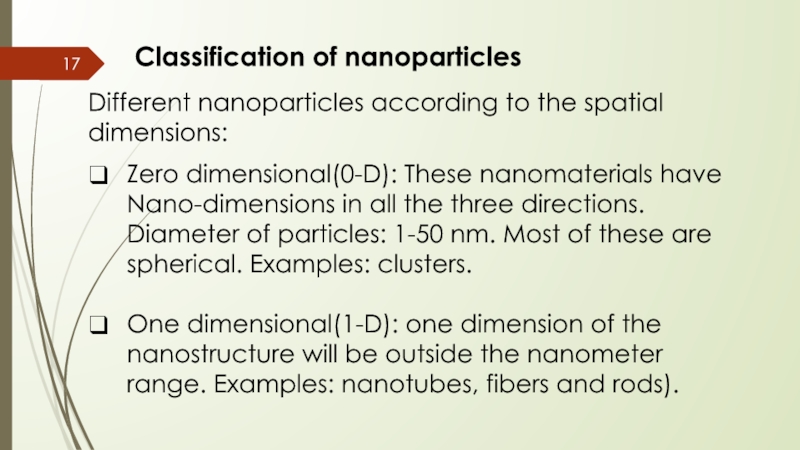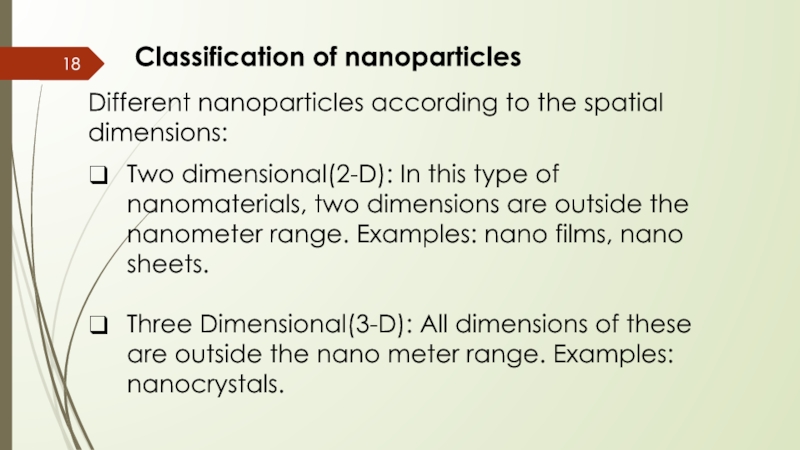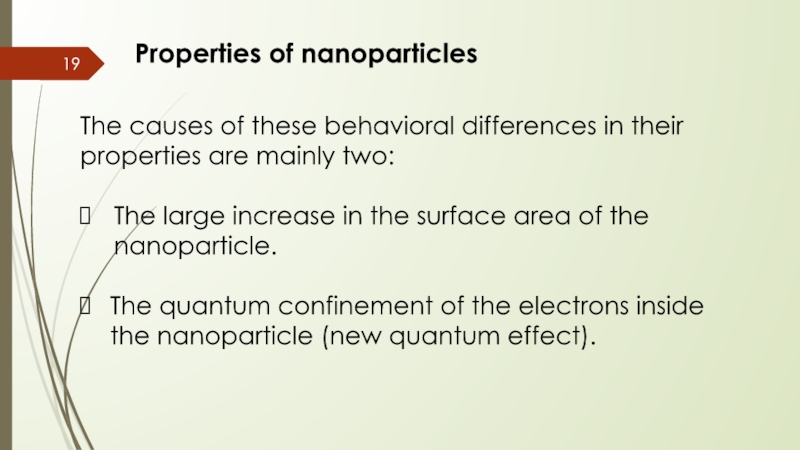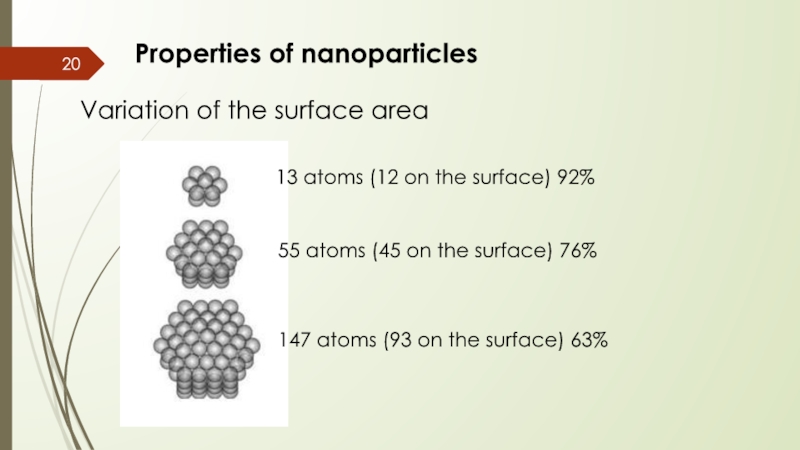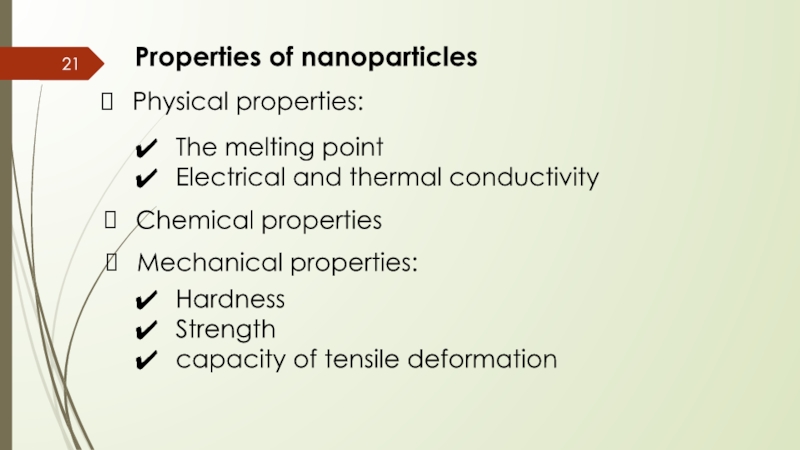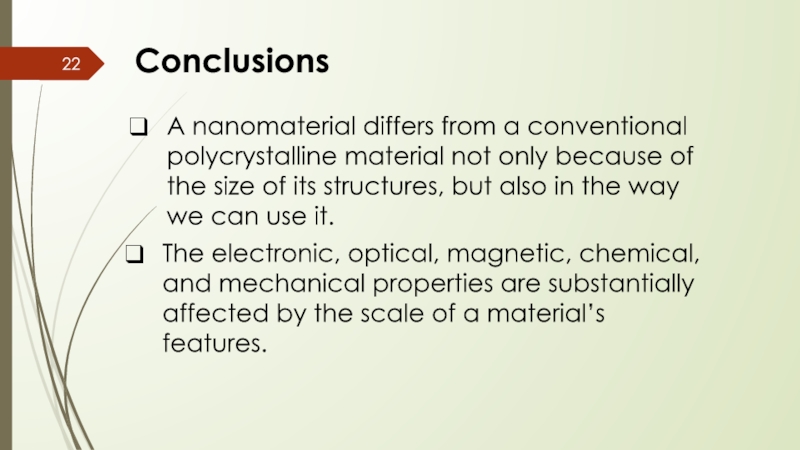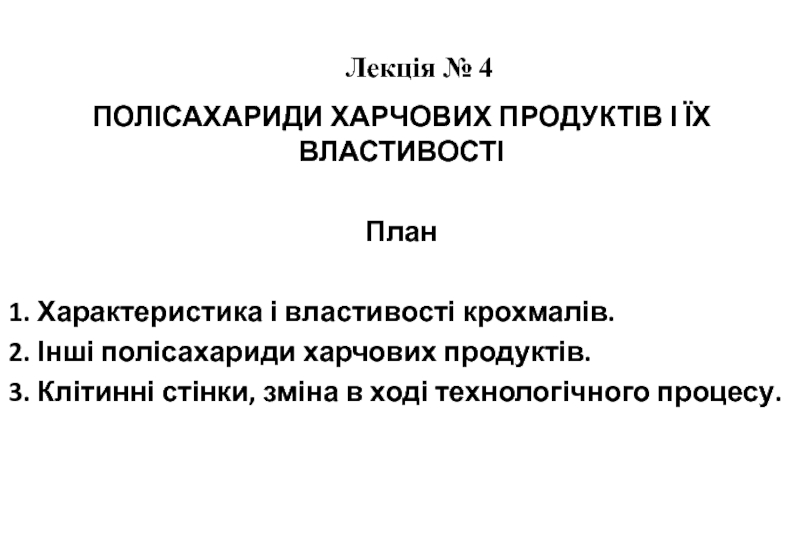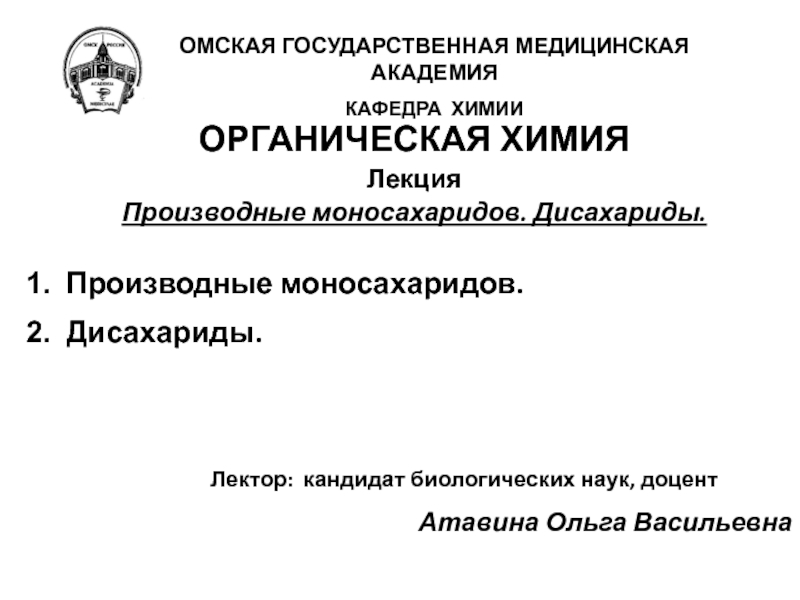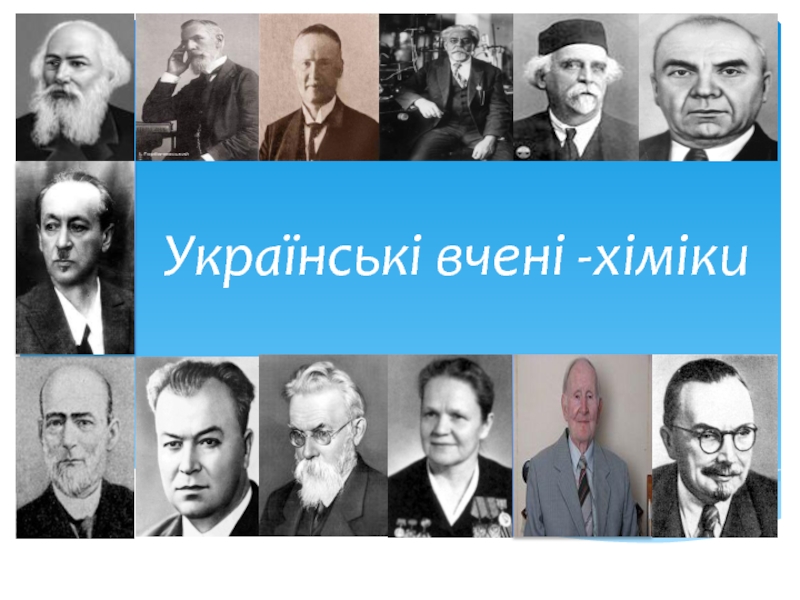- Главная
- Разное
- Дизайн
- Бизнес и предпринимательство
- Аналитика
- Образование
- Развлечения
- Красота и здоровье
- Финансы
- Государство
- Путешествия
- Спорт
- Недвижимость
- Армия
- Графика
- Культурология
- Еда и кулинария
- Лингвистика
- Английский язык
- Астрономия
- Алгебра
- Биология
- География
- Детские презентации
- Информатика
- История
- Литература
- Маркетинг
- Математика
- Медицина
- Менеджмент
- Музыка
- МХК
- Немецкий язык
- ОБЖ
- Обществознание
- Окружающий мир
- Педагогика
- Русский язык
- Технология
- Физика
- Философия
- Химия
- Шаблоны, картинки для презентаций
- Экология
- Экономика
- Юриспруденция
Physical chemistry of nanostructured systems презентация
Содержание
- 1. Physical chemistry of nanostructured systems
- 2. INTRODUCTION Nanotechnology was born as a science
- 3. INTRODUCTION Advances for the industry: Materials with
- 4. INTRODUCTION Richard Feynman was the first to
- 5. OBJECTIVES To explain formation and development of
- 6. OUTLINE Introduction. Formation and development of
- 7. Formation and development of Nanochemistry Nanoscience: study
- 8. Formation and development of Nanochemistry Nanoparticles can
- 9. Classification of nanoparticles The US Environmental Agency:
- 10. Classification of nanoparticles The US Environmental Agency:
- 11. Classification of nanoparticles The US Environmental Agency:
- 12. Classification of nanoparticles Typical examples of various
- 13. Classification of nanoparticles Different shapes of nanoparticles
- 14. Classification of nanoparticles Examples of tube-type nanoparticles: Carbon nanotubes
- 15. Classification of nanoparticles Examples of hollow sphere nanoparticles: Fullerenes
- 16. Classification of nanoparticles Different nanoparticles according to the spatial dimensions:
- 17. Classification of nanoparticles Different nanoparticles according to
- 18. Classification of nanoparticles Different nanoparticles according to
- 19. Properties of nanoparticles The causes of these
- 20. Properties of nanoparticles Variation of the surface
- 21. Properties of nanoparticles Physical properties: The melting
- 22. Conclusions A nanomaterial differs from a conventional
- 23. THANK YOU FOR YOUR ATTENTION!
Слайд 2INTRODUCTION
Nanotechnology was born as a science very recently. It is one
The main purpose is to help humanity in its development.
Слайд 3INTRODUCTION
Advances for the industry:
Materials with new properties not developed until now.
Stronger
Faster computer applications.
Various medical applications.
Слайд 4INTRODUCTION
Richard Feynman was the first to refer the possibilities of nanoscience
Questions are raised about its suitability and opens the possibility of transforming matter from the minimum to our benefit and today this is possible thanks to Nanotechnology.
Слайд 5OBJECTIVES
To explain formation and development of Nanochemistry.
To give an overview about
To organize nanoparticles according different criteria.
To explain briefly properties of nanoparticles.
Слайд 6OUTLINE
Introduction.
Formation and development of Nanochemistry.
Nanoparticle as a structural unit of
Classification and properties of nanoparticles.
Слайд 7Formation and development of Nanochemistry
Nanoscience: study of phenomena and manipulation of
Nanotechnology: a device or machine, product or process, based upon individuals or multiple integrated nanoscale components.
Nanochemistry: is the utilization of synthetic chemistry to make nanoscale building blocks of different size and shape, composition and surface structure, charge and functionality.
Слайд 8Formation and development of Nanochemistry
Nanoparticles can be defined as particles with
Also, nanoparticles can be in either an amorphous or crystalline state. If crystalline is considered: nanocrystal
Слайд 9Classification of nanoparticles
The US Environmental Agency:
Carbon based materials: with spherical,
Metallic based materials: they can be quantum dots (quantum dots or transistors of a single electron) or nanoparticles of gold, silver42 or of reactive metals like titanium dioxide.
Слайд 10Classification of nanoparticles
The US Environmental Agency:
Dendrimers: are highly branched macromolecules
Слайд 11Classification of nanoparticles
The US Environmental Agency:
4. Composites: Nanocomposite can be
Слайд 12Classification of nanoparticles
Typical examples of various nanoparticles:
Composition Nanoparticles
Pure
Bimetal Fe-Co, Co-Ni, Pd-Au
Alloy FePt, CoPt, PdNi, PtRu
Semiconductor GaAs, CdTe, CdSe, CdS, ZnSe, AgBr
Oxide SiO2, Al2O3, TiO2, CeO2, Fe3O4, ZrO2
Слайд 13Classification of nanoparticles
Different shapes of nanoparticles :
Слайд 17Classification of nanoparticles
Different nanoparticles according to the spatial dimensions:
Zero dimensional(0-D): These
One dimensional(1-D): one dimension of the nanostructure will be outside the nanometer range. Examples: nanotubes, fibers and rods).
Слайд 18Classification of nanoparticles
Different nanoparticles according to the spatial dimensions:
Two dimensional(2-D): In
Three Dimensional(3-D): All dimensions of these are outside the nano meter range. Examples: nanocrystals.
Слайд 19Properties of nanoparticles
The causes of these behavioral differences in their properties
The large increase in the surface area of the nanoparticle.
The quantum confinement of the electrons inside the nanoparticle (new quantum effect).
Слайд 20Properties of nanoparticles
Variation of the surface area
13 atoms (12 on the
55 atoms (45 on the surface) 76%
147 atoms (93 on the surface) 63%
Слайд 21Properties of nanoparticles
Physical properties:
The melting point
Electrical and thermal conductivity
Chemical properties
Mechanical
Hardness
Strength
capacity of tensile deformation
Слайд 22Conclusions
A nanomaterial differs from a conventional polycrystalline material not only because
The electronic, optical, magnetic, chemical, and mechanical properties are substantially affected by the scale of a material’s features.

